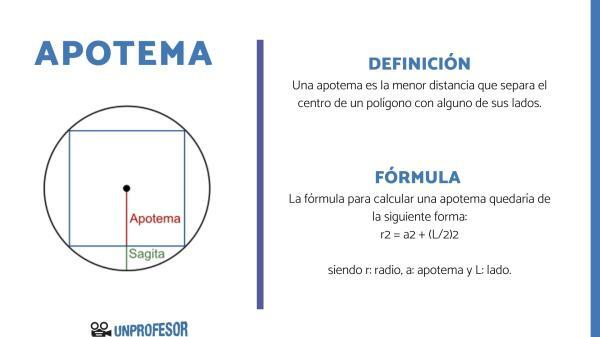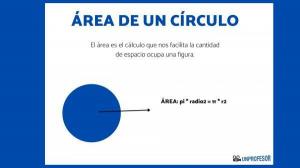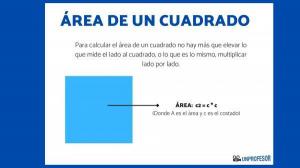What is an APOTOME and how is it calculated?

In a new lesson from a Teacher we will study what is an apothem and how is it calculated. First of all we are going to review what a polygon is. Later we will see the definition of apothem together with its characteristics. Then we will learn its formula and how it is calculated, ending with some examples.
Index
- What is the apothem?
- How is an apothem calculated?
- What are polygons
- Types of regular polygons
- Example of how the apothem is calculated
What is the apothem?
The apothem is the smallest distance that separates the center of a polygon from one of its sides.. The apothem is represented by a segment that joins the center of the figure with one of its sides. In the case of regular polygons, the apothem represents the distance between the center and the middle of any of its sides.
In other words, the apothem intersects the side of the figure in two equal parts, that is, divide the side in two.
The intersection between the apothem and the side of the regular figure form
four sexagesimal 90° angles, that is, they are perpendicular and form right angles.Sagittarius
If we locate a circumscribed regular polygon within a circle, the apothem will be the segment that joins the center of the circle with another point of the circle, which passes through the midpoint of one side of the polygon. The part of the segment that joins the middle of the polygon with the circumference is what we call "sagittal".

How is an apothem calculated?
For calculate an apothem of regular polygons, we are going to use as referent to the Pythagoras theorem.
Remember that the Pythagorean theorem says that in every right triangle, the sum of the squares of the lengths of its legs is equal to the square of the length of the hypotenuse.
So let's think that we have a regular polygon circumscribed inside a circle. The apothem, the radius and half of the side corresponding to it, form a right triangle.
So, the hypotenuse of my triangle will be the measure corresponding to the radius, while the legs are, on the one hand, half the measure of one of its sides, and on the other, the apothem, whose value we do not know
The formula to calculate the apothem would be as follows:
r2 = to2 +(L/2)2
where r: radius, a: apothem and L: side.
We clear the apothem, this being the unknown that we want to clear from the equation.
r2 -(L/2)2 = to2
square root (r2 -(L/2)2 )= to
In this way, we can know the value of the apothem of any regular polygon.

What are polygons.
In mathematics, more specifically in the branch of geometries, polygons are geometric figures in the plane that are delimited by a specific number of straight lines.
Polygons are made up of sides, vertices, interior angles, apothem, and diagonals.
- sides: straight segments that form the figure.
- vertices: point that joins two sides that are consecutive.
- interior angles: are the angles formed by two sides that are consecutive within the figure.
- Apothem: straight line that joins the center with the means of the sides of the figure.
- diagonals: are the line segments that join two sides that are not consecutive.
The regular polygons They are geometric figures with the particularity of having all their sides of the same measure and their interior angles equal.
These figures can be circumscribed within a circle. In other words, we can contain a regular polygon inside a circle that will pass through the vertices of the figure.
Types of regular polygons.
There are some types of regular polygons that They are classified according to the number of sides they have.
- Square: regular quadrilaterals with two of its opposite sides parallel and its interior angles right, that is, it measures 90° sexagesimals.
- Equilateral triangle: Regular triangles with equal sides and internal angles each of 60° sexagesimals.
- regular pentagon: is a polygon with 5 sides and interior angles that add up to 180° sexagesimals.
- regular hexagon: polygon with 6 sides of equal measure and interior angles that add up to 120° sexagesimals.
- regular heptagon: polygon with 7 equal sides and interior angles that add up to 128.57° sexagesimals.
- regular octagon: polygon with 8 equal sides and interior angles that add up to 135° sexagesimals.
- regular nonagon: polygon with 9 equal sides.
In unProfesor we discover the elements of regular polygons.
Example of how the apothem is calculated.
To learn how to calculate an apothem, here are 2 easy-to-understand examples.
Example 1
Taking a regular polygon circumscribed in a circumference of radius 10 cm and sides 18 c, calculate the length of the apothem.
a= Square root (r2 -(L/2)2 )
We change the values of the radius and side that the exercise offers us as data.
a= Square root (102 - (18/2)2 )
a= Square root (100 - 81)
a=Square root (19)
a=4.35
That is, the apothem measures 4.35 cm.
Example 2
Now we have a regular polygon with a side of 6 cm inside a circle of radius 9 cm. What is the value of the apothem?
We use the formula to calculate it.
a= Square root (r2 -(L/2)2 )
Now we are going to change the values of the radius and side that we know.
a=Square root (92 - (6/2)2 )
a= Square root (81 - 9)
a=Square root (72)
a=8.48
So, the value of the apothem is 8.48 cm.
If you liked this lesson, share it with your classmates. And remember that you can continue browsing the page. On the website of a Teacher there is very interesting content that can be useful to you.
If you want to read more articles similar to What is an apothem and how is it calculated?, we recommend that you enter our category of Geometry.
Bibliography
- Pineda, C. AND. G., & Garcia, S. m. (2012). The area of the parallelogram and inscribed polygons. Scientia et technica, 2(51), 161-165.
- Yanes, G. (2003). About the validity of the formula to calculate the area of a regular polygon.



